Powerful Food Lobby Loses Big Members Over Shifting Consumer Concerns


Membership is changing at the country's largest grocery association, and the shakeup may say a lot about the impact consumers have on their favorite brands.
In October Nestle announced to the Grocery Manufacturers Association that it would be ending its affiliation -- and taking its 8,500 brands with it. According to FoodDive, it had nothing to do with whether the GMA was a strong enough lobbying force. It had to do with listening to consumers.
The governing issue, said Food Dive writer Cathy Siegner "likely stems from differing hot-button policy positions taken by the Swiss food giant and the industry lobbying association."
Although Nestle declined to comment on the story, it's not the first corporation to announce a departure from GMA. Campbell's Soup Company, owner of the popular Swanson, V8 and Pepperidge Farm brands, was more forthright about why it was leaving last July.
It was "not a financial decision" Campbell's CEO Denise Morrison told shareholders at the company's annual investors day event. It was driven by "principles."
"As we continue to evolve as a purpose-driven company, many of our beliefs have diverged from the rest of the food industry and from our trade association,” Morrison told the audience.
At the heart of the issue is the genetically modified organism debate, the question of whether to acquiesce to consumers' demands for labeling products that have GMO ingredients. Campbell's is one of a handful of corporations that announced a year ago it would voluntarily label products that had been made with genetic engineering. It's also gone head-to-head in disagreement with the GMA's lobbying against legislation that has supported more transparency on genetically modified processes.
But from the standpoint of a growing list of corporations that are now rethinking their affiliation with the GMA, the real issue is changing consumer tastes. Campbell's and Nestle have both taken positions in recent years that suggest they are listening to consumers more closely. Campbell's remake of its signature line of soups to address greater demand for "fresh" ingredients and Nestle's focus on finding ways to cut energy usage, decrease its carbon footprint and increase its advocacy for environmental concerns may be shaping a new pathway for corporations that have image change in mind.
For Campbell's, a company that like Nestle, made its mark through automation and fast-use products, it led the company to joining the Plant Based Food Association, alongside labels like Tofurky, daiya and Dr. Bronner's.
And they aren't the only GMA members rethinking their affiliation with an organization known for countering popular consumer movements. Dairy producer Dean Foods is on the departure list and Mars, a growing voice in promoting sustainable business methods has just announced its plans to leave this week.
"At this time, we believe we can more effectively drive our business objectives and meaningful progress for our categories and consumers by working with other like-minded companies and through other sector-specific trade associations and collaborations," the company said in a statement. Mars had also announced in 2016 that it would implement GMO labeling in response to feedback it was getting from consumers.
For the grocery association, Mars' departure is liable to sting. The corporation, which posted $35 billion in sales this year, is sixth on the Forbes List of America's largest private companies and owns some of the most popular brands on the market in the pet care, fast-food and candy sectors across the world.
Will this growing departure of Big Food companies change the GMA's lobbying stance? It's too early to tell. But it will likely impact the landscape when it comes to the Grocery Manufacturers Association's pull in Washington, where those companies' combined worth spoke volumes when it came to lobbying efforts.
Still, consumers back home can be assured of one thing: Their opinions do count, because some of the world's biggest brands are definitely listening.
Flickr image: Bodo
New Tax "Reform" Bill Guts Carbon Capture Lifeline For U.S. Coal Industry
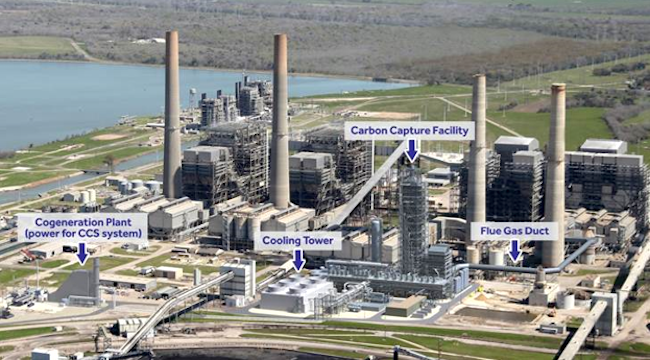

Carbon capture is one of the few remaining avenues left for coal to continue generating power in the low carbon economy of the future, but it looks like the new Republican-backed tax overhaul bill will slam the door shut. The House version of the bill tosses out a key financial instrument for building carbon capture facilities -- along with highways, seaports and other critical infrastructure.
So much for bringing back coal jobs. President Trump campaigned on the promise of reviving the U.S. coal industry, but on his watch the torrent of coal power plant closures has continued unabated.
The carbon capture solution
When carbon capture is the topic, the notorious FutureGen project comes to mind. FutureGen was a billion-dollar public-private investment intended to make the case for "clean coal." Unfortunately the technology was economically unsustainable. The Energy Department stopped investing taxpayer dollars in FutureGen back in 2015, under President Obama.That could also be the fate of a Shell carbon capture project in Canada's oil sands fields. The project launched in 2012 with a big assist from Canadian taxpayers, but last spring the company decided to sell off most of its oil sands assets.
Nevertheless, the general idea of carbon capture is still very much alive. The source doesn't necessarily have to be a coal power plant. It could be any source of waste gas, including factories and other industrial facilities.
Co-locating carbon capture with a carbon recycling opportunity could be the key to making the operation financially viable.
One representative example is in Canada, where a demonstration carbon capture project is located at a paper and pulp mill. The captured carbon dioxide goes to greenhouses where vegetables are grown for sale.
If all goes well the ambitious project will demonstrate that carbon capture is a workforce multiplier. When fully built out in 2019, the greenhouses are expected to employ 400 people.
On the high tech side, a company called LanzaTech has developed a microbe-based system that recycles waste gas into useful fuels.
Carbon capture could be a lifeline for U.S. coal...or not
Fossil fuel stakeholders are also beginning to explore carbon capture as a means of staying relevant in a low-carbon world. In one example, back in 2014 NRG launched the Petra Nova project in Texas, aimed at using waste carbon from a coal power plant to extend the life nearby oil fields. The project became operational earlier this year.
The project received financial help in a $190 million grant through the Department of Energy, and also from a financial instrument called a private-activity bond (PAB).
PABs are low cost bonds issued by state or local agencies for infrastructure projects that serve a clear public purpose. They let private companies raise low-cost funding for seaports, airports, water and sewer projects, highways and low income housing.
Until the 1980s, utilities routinely used PABs to finance air pollution upgrades. That practice was restricted to "special circumstances" the last time there was a major tax overhaul (for those of you keeping score at home, that was back in 1986 under a Republican administration).
The "special circumstances" provision enabled NRG to use PABs for the Petra Nova plant, as a disaster recovery project after Hurricane Rita struck Texas in 2005.
In 2015 bipartisan legislation was introduced in the House and Senate to enable more carbon capture projects to move forward without having to qualify as a disaster recovery measures. Legislation to loosen the restrictions on PABs for carbon capture projects was also introduced earlier this year, but it's a long way from becoming law -- if ever.
Last Friday the Washington Post published an in-depth article on the PAB situation and its implications for the U.S. coal industry. Do read the full piece for detail, but for those of you on the go here's a snippet:
...House lawmakers are poised to undermine reviving the financial tool before the effort gains traction in Congress. Among the ways House Republicans decided to change the tax code in the tax overhaul bill passed in November was to scrap the use of PABs for the construction of everything from highways to seaports.
The House and Senate versions of the tax bill are being reconciled this week. As of this writing, the Senate version retains the existing PAB landscape and some House Republicans are advocating for the Senate version to win out. That doesn't do all that much to help finance new carbon capture projects, but it's something.
Meanwhile, the march of coal power plant closures continues unabated. Until recently, cheap natural gas was the main driver pushing coal out of the picture, but a new round of closures slated in Wisconsin and Missouri indicates that renewable energy is also becoming a force.
As for President Trump, he appears to be tied up with other matters. No word yet on whether or not the President supports PABs as a mechanism for promoting "clean" coal and protecting US coal jobs, but stay tuned.
Photo: Petra Nova carbon capture facility via US EIA.
Shop Local? Why Healthy Soil Matters


If you live in a large city, you likely have the luxury to head to the grocery store or farmer's market of your choice to buy produce. Whether you need sweet potatoes for your holiday yams recipe or kale to prepare meals for the upcoming work week, you rely on the fact that the items that you want are there waiting. It can be easy to forget how robust the global agriculture industry is that grows the food that we’ve become accustomed to buying on demand. However, every year on December 5 we observe World Soil Day (WSD), a day meant to raise awareness about the importance of healthy soil as well as a day to advocate for the sustainable management of soil resources. At its essence, this day celebrates the life-giving power of food.
WSD was conceived by the International Union of Soil Sciences (IUSS) back in 2002. IUSS understood that soil health is critical to the wellbeing of society. So they created a resolution, to designate a day dedicated to the health of soils across the world, and this resolution was brought to the Food & Agriculture Organization of the United Nations (FAO). At the FAO Conference in June 2013, WSD was unanimously endorsed and a motion was put forward for its official adoption at the 68th UN General Assembly. In December 2013 the UN General Assembly passed the motion and designated December 5, 2014, as the first official World Soil Day.
Here in the United States, the Soil Health Partnership (SHP), a National Corn Growers of America (NCGA) initiative, is one of the organizations spearheading the movement around soil. The SHP is identifying, testing and measuring management practices to improve soil health, which in turn benefits farmers’ operations.
TriplePundit spoke with Nick Goeser, Director of Soil Health and Sustainability for NCGA, about the SHP.
“In this farmer-led program, we set out to better understand the links between soil health, crop yield, economic profitability and return on investment for farmers, and the environmental outcomes that impact our production systems from day to day.”
The central question of the SHP is “How do these all fit together through a system that works directly with farmers?”
The SHP isn’t sustained by NCGA alone. There are a number of other organizations who have a stake in their work, most notably, Monsanto. Having faced criticism over the years as the GMO conversation poured into public consciousness, the company has been a main driver of the SHP since its inception in 2014.
Goeser describes how Monsanto’s help and guidance have supported the project: “Monsanto has been a substantial partner in the program to help us drive ahead, to help us understand novel approaches that could return value directly to our farmers, through adopting the same agricultural practices for conservation benefits.”
In 2016, the SHP was awarded a conservation innovation grant through the National Resources Conservation Service. “They’ve helped up to think in new ways and bring technology to the table throughout the system of farms,” Goeser said.
As technology continues to disrupt industries, it’s creating new opportunities in agriculture as well. “It’s an incredibly exciting time,” Goeser enthusiastically remarks. “If we are focusing on the U.S. agricultural system we have incredible technology and it's constantly getting better. The tools, services and programs being offered to our farmers -- that they are actually utilizing at a farm level -- are incredible.” The result is “better management of farms as businesses so that we can better understand these interactions between environmental improvements and enhancements, our crop productions systems and our investments in our soil.”
And then there’s the food; we can’t forget about the food. This entire initiative points back to the important business of sustaining the growth and production of the food that we eat every day.
So on December 5, why should anyone care about WSD? Goeser said it best:
If you eat, you should probably be interested in soil. The vast majority of food that we have on this planet, that comes to each one of our dinner tables, is produced in one soil type or another throughout this country, throughout this world. There is a very direct connection between every living person on this planet to soil. Sustaining those soils, and helping them to thrive year after year is essential to that stable food supply that allows us to eat our meals and our snacks and everything that keeps us going.
Now that’s food for thought. Happy World Soil Day!
Science-based Climate Targets: Helping Business Leaders Fill the Climate Ambition Void


This series is sponsored by Tetra Pak and produced by the TriplePundit editorial team.
History is spiked with aspirational moments that influence a turn, a new narrative, a change of course. It's easy to look back and marvel at past historical moments.
The signing of the Paris Agreement in December 2015 was a “watershed moment," for international unity and also for business, says Cynthia Cummins, Director of Private Sector Climate Mitigation for World Resources Institute, in a recent interview with TriplePundit. WRI is a principal partner in the Science-Based Targets Initiative, a collaborative effort between the Carbon Disclosure Project (CDP), the World Wide Fund for Nature (WWF), and the United Nations Global Compact (UNGC).
Framing any current event in a larger historical perception is fraught with our own bias of temporal perception. It's a challenge to see the big picture from within it.
We can portend and influence, but never know the future. In real-time, historic moments seem to take forever.
Seeing the forest for the trees
Two years after it was first signed, and a year after it truly came into force, the Paris Agreement is alive and well. Increasingly, it is a rallying point for businesses looking for a signpost toward action.
Couching a marketing message in greenwash is nothing new in business. But it's a harder sell than it used to be.
“When the Paris Agreement was signed,” Cummins says, “it gave companies the certainty they needed.
“They see that the whole world's harmonizing around the same level of ambition and helps them understand that they need to take action to have a license to operate."
Satisfying consumer demand may drive initial steps toward sustainability, but existential risk brings to business a "come to Jesus" moment.
Climate risk impacts markets, production costs, resource availability and shareholder value.
A magic moment?
The principal criticism of COP21's outcome is its focus on aspiration over ambition and binding targets. A point taken, but such criticisms miss a larger point: what it took to get this far and the opportunities the Paris Agreement represents for real change.
The lasting “magic” of COP21 rests in the Nationally Determined Contributions (NDCs), the defining mechanism for a shared effort toward a common goal.
The NDCs give contextual flexibility for each nation to choose their own path for emissions reduction. This flexibility brings more influential voices into the conversation. Global warming cannot be managed without global commitment.
Coming on the heels of UN adoption of the Sustainable Development Goals, the Paris Agreement reinforced an “un-siloing of sectors,” opening the playing field to all stakeholders. But it remains unclear who is in it to win. Or what winning even looked like.
The fallacy of feasible
While a significant historical turning point, the Paris Agreement is, of course, a compromise. Nationally Determined Targets define what each country considers "feasible."
Friction tends to sneak into agreeing on what is feasible. This non-binding detachment from science-based targets is why “increased ambition” is critical to the success of the Paris Agreement and remains central to the discussion at the conclusion of COP23.
"There's been a real void out there," says Cummins. "Governments have not been communicating with companies what climate leadership looks like and what level of ambition they need to take."
"Science-based targets has helped to fill that void," she says.
The opportunity for business
The Science-based Targets Initiative "sends a clear message to the private sector" about the required level of ambition and what climate leadership actually looks like "in our current environment," Cummins says.
Where governments may be mired in indecision and half-measures, science-based targets provide a platform for corporate climate leadership, from defining what a science-based target is to designing and implementing an audited mitigation target.
There are many thousands of articles on how to increase business efficiency. Arguably, no business is able to fully maximize every possible aspect of efficiency. How it chooses to focus resources toward efficiency expresses its values. The transformation of “corporate social responsibility” from a niche marketing-focused sideshow to a critically-assessed core operating value is clearly underway, emphasizing the increasing business value of the triple bottom line.
More than 300 businesses are taking action through the initiative, 84 of those already have set approved targets. And the trend is up. Cummins says that "about 2 companies per week" join the initiative.
The aim is that by 2020, science-based target setting will be standard business practice. By stretching "feasible" from aspiration to real ambition, business has an opportunity to lead on the promise of the Paris Agreement. But, as Cummins concludes:
"There's a lot of work to do."
Image credit: Flickr / Climate Alliance Org and DXL/Unsplash
The Renewable Energy Transition at Work In Wisconsin: It's Complicated

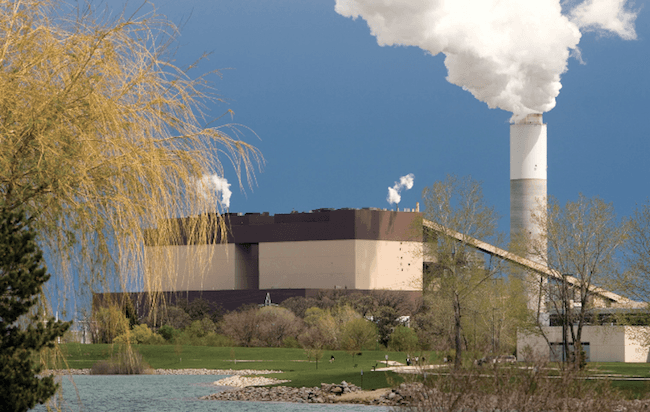
When President Trump promised to bring coal jobs back, he may have hedged a bit. Jobs in coal production have ticked up temporarily, but jobs in the renewable energy sector are surging while jobs at U.S. coal power plants evaporate. In the latest development, last week Wisconsin's WE Energies announced that it will shut down its massive 1,190-megawatt Pleasant Prairie coal power plant in Wisconsin by next summer, terminating 158 jobs there.
In an interesting twist, the Pleasant Prairie announcement comes on the heels of a decision by China's Foxconn to establish a major new manufacturing facility in Wisconsin. Just a few years ago the sudden loss of 1,190 megwatts in capacity would have caused nerves to fray among Wisconsin's energy planners. Well, that was then...
It's official: renewable energy is a player
Throughout the Obama administration, cheap natural gas was the driving force behind coal plant closures. Older coal plants built decades ago are nearing the end of their intended lifespans, and refurbishing a coal power plant is an expensive proposition. For plant operators, the economics favor switching to natural gas.
Aside from the low cost of fuel, gas turbines also provide for greater responsiveness and flexibility than coal. Gas stakeholders are building a case that gas power plants are more compatible with renewable energy and microgrid technology.
Another important factor in coal plant retirement is slow or no growth in demand for grid electricity. That's largely attributed to energy efficiency improvements and broader economic trends related to the manufacturing sector.
As for renewable energy, despite all the excitement over this new wind farm or that new solar cell, until very recently renewables played little or no role in coal plant closures.
That has begun to change. Wind and solar are competitive with coal in some markets, as demonstrated by the Pleasant Prairie closure. Distributed renewables could also have an impact on demand for grid energy.
So, it's no surprise that WE Energies credited the falling cost of renewable energy along with the usual suspects -- cheap natural gas and slack demand -- for the Pleasant Prairie closure.
The natural gas ball and chain
The Pleasant Prairie closure is also interesting because it illustrates the limits of switching to natural gas from coal.
WE Energies is part of the WEC Energy Group, which lists a total of nine utilities in its portfolio. All together they serve 4.4 million customers in Wisconsin and the three surrounding states of Michgan, Illinois and Minnesota.
The Pleasant Prairie power plant could be a giant step forward in WEC's efforts to reduce its carbon footprint. The plant's current emissions total about 7.5 millions of carbon dioxide annually, and that single source accounts for a majority of WE Energie's carbon emissions.
However, WEC won't realize the full carbon benefit of the closure. WEC has announced plans to add 350 megawatts in solar energy in Wisconsin over the next couple of years, but it will also add new natural gas power units in the state. Emissions related to the new gas power units will counterbalance the carbon impact of the Pleasant Prairie closure.
Natural gas is billed as "cleaner" fuel than coal, but it is responsible for high risk impacts including methane emissions all along the supply chain, from drilling to transmission, storage and distribution. Other local impacts associated with natural gas drilling and waste disposal include air quality, water resources and seismic hazards.
With this in mind it's instructive to look at nearby Minnesota, where the availability and low cost of wind energy will provide for the shutdown of a 200-megawatt coal power plant by 2019. That's far ahead of the plant's previously planned retirement date of 2034.
Coal jobs vs. manufacturing jobs
The new Foxconn facility also demonstrates how renewable energy is factoring into site selection for new manufacturing facilities.
Foxconn manufactures LCD screens for electronics, and the company counts Apple among its high profile clients. The proposed Wisconsin facility has been barraged with criticism partly due to Foxconn's poor CSR track record in its home country China, and partly due to the tax giveaways the company won from state officials.
Nevertheless, the Wisconsin project appears to be on track, and it will bring a reported 13,000 jobs to Wisconsin.
In a recent article in the Milwaukee Journal-Sentinel, Foxconn Chairman Terry Gou listed a dozen reasons why Foxconn settled on the Wisconsin location. Renewable energy was among them:
The availability and reliability of energy in the state will be a key asset for the company, Gou said. Renewable energy will be an important part of the company’s future, he said.
Gou also noted that several important corporate partners are also based in Wisconsin, including at least one -- Johnson Controls -- that is deeply enmeshed with renewable energy technology.
Another related factor is high efficiency, robotics-based advanced manufacturing, an area in which Gou anticipates that Wisconsin already has an edge.
In addition, Foxconn is eyeing the state's tech savvy workforce, including military veterans:
The state has a strong university and technical college systems that can be leveraged to develop the high-tech workforce the company will need. “We want to hire returning soldiers,” Gou said.
With all this in mind, it's worth noting that the 158 coal jobs lost at Pleasant Prairie will be more than offset by the 13,000 jobs Foxconn anticipates at the new facility.
Wisconsin may end up getting the short end of the stick on the Foxconn deal, but the state's renewable energy sector -- including an educated workforce and related supporting industries -- looks set to attract more manufacturing jobs with or without fossil fuels.
Photo (screenshot): via WE Energies.
Allcot Says It Can Fill in the Gaps in Companies’ Climate Action Plans


During last week’s United Nations World Tourism Organization (UNWTO) Conference on Jobs and Sustainable Development, leaders repeatedly made the case for advancing tourism as a way to lift people out of poverty while minimizing any environmental impact.
At first glance, the UNWTO’s pledge comes across as hyper-ambitious. Most projections estimate annual international trips will surge 50 percent, or over 1.8 billion a year by 2030. So how can this growth become responsible and sustainable? Considering the number of flights involved – and their carbon emissions – tourism's carbon footprint presents a huge concern.
One company, Allcot, believes it can assist the tourism industry, as well as other sectors, on this front with its suite of carbon offset programs. Allcot’s various projects, notably one in Guatemala, was instrumental in enabling last week’s conference in Montego Bay, Jamaica, become a carbon-neutral event. To date, the company claims it has traded over 20 million carbon emission allowances.
“The fundamental thing we can do is that we can work with anyone from small organizations to large companies and nonprofits to help reduce their impacts on the environment and help navigate the broad economic transition to sustainability,” said Kevin Fertig, Director of Business Development for Allcot Americas.
Allcot offers three core services: carbon measurement, carbon reduction consulting and carbon offset programs.
Measurement is key to identifying inefficiencies across an organization’s operations. Allcot figures once an organization can accurately measure its energy consumption and carbon emissions, that company will be ready to find ways to chip away even more at its carbon footprint.
Carbon reduction involves some obvious solutions, such as investments in clean energy technologies. If an organization decides to invest in clean energy, taking such a step is usually cheaper than sourcing power from what the local grid can provide. In addition, as the price of renewables continues to fall, organizations have more access to reliable and cost-effective sources of power. “We often explain to organizations that if they invest in energy efficiency on-site, they can often score a payback period within two years, and afterward generate cost savings,” said Fertig.
As a result, while an organization curbs its energy use, it can also decrease costs. Furthermore, if these new best practices can be shared with a company’s suppliers, that business in turn can lower its supply chain costs, further reducing overall long-term expenses.
Investment in carbon offsets, insisted Fertig, is the "best last place" organizations should be looking when they are evaluating how to reduce their carbon footprints. “You need to reduce the emissions where it makes the most sense for you,” said Fertig, “but there will always be unavoidable emissions, as with airplanes.”
For those pesky last remaining emissions, a company can offset its impact and also improve its overall sustainability performance by investing in an ongoing project elsewhere in the world.
In implementing this three-tiered plan, the company counts three verticals as comprising the core of its business:
- First, Allcot works with the global travel sector, which has long struggled with mitigating its carbon footprint. The company says it works with hotel associations to develop sustainability standards that can help this industry manage its carbon footprint.
- In addition, the company counts the sports industry as one of its target markets – which should not be surprising considering Allen Hershkowitz, Managing Director of Allcot Americas, is involved with organizations such as Sports and Sustainability International (SandSI).
- Finally, Allcot believes the international finance sector is key to the continued growth of its carbon offset and consulting services. Fertig explained that Allcot advises this industry to work on reducing the carbon footprint of the actual electronic transactions. After all, each electronic message and transfer has its own carbon cost – a small one, but they add up quickly with the thousands of transactions a bank can complete on any given day.
“A lot of the world’s largest banks and financial institutions realize how important green finance is, but what they don’t look at is the carbon cost of the transactions themselves,” Fertig said. “Even if you’re diverging a large amount of funds into ambitious carbon offset and climate mitigation projects, there is still a carbon cost to each transaction.”
The differentiator for Allcot is the fact that it is not merely a program manager, nor is it a carbon offset broker. The company manages 14 carbon offset projects worldwide, which range from clean energy installations to methane capture at landfills to reforestation, with one example being a mangrove reforestation project in Senegal. Additional reforestation projects are located in the Amazonian rainforests of Brazil, as well as the aforementioned program in Guatemala.
Allcot describes itself as one of the only vertically integrated carbon offset company on the market. Since the company owns its own carbon offset projects, it can be cost-competitive, and can even share revenues with clients because it has a steady stream of revenues due to the fact it owns its own carbon offset programs. “We can do this because there is no middleman fee, as we’re not just a broker,” said Fertig.
Organizations can estimate their emissions by using various carbon calculators available online, including one that Allcot provides. The emissions tally up fast: one ton of carbon is equivalent to 12 nights spent in a tourist destination such as Jamaica; 10 tons of carbon are equivalent to the household energy consumption by an average U.S. household over the course of a year.
Image credit: Allcot
Innovation Drives Road Construction’s Sustainable Practices
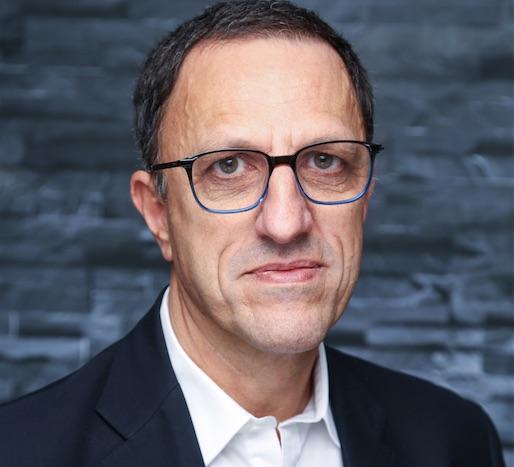
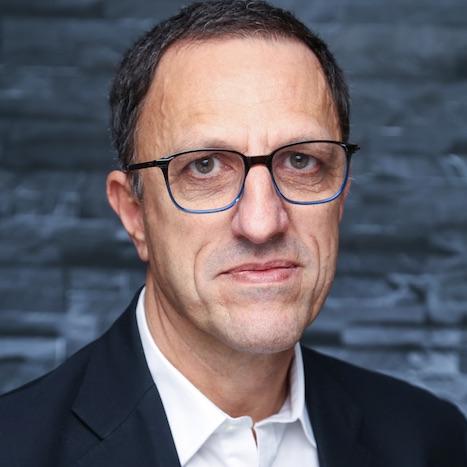
Sustainability. Now that this word is firmly entrenched in the business landscape, the real question is just how committed organizations are to sustainable practices vs. bottom-line results? This is a story of two companies involved in road construction that have sustainability in their DNA, and how they are collaborating to help solve one of the industry’s great conundrums.
Skanska, a leading project development and construction company, espouses a comprehensive sustainability strategy that addresses several areas, including a “green” component that sets environmental goals for all its business units. Skanska Sweden is committed to becoming carbon neutral by 2050, and its policies and practices are oriented to achieving this objective. Meanwhile, Kraton, a global producer of specialty polymers and chemicals, is developing new applications for its bio-based products.
The road construction industry’s priority is to build safe and durable roads for the public. Over the years, the road industry has worked to reduce its end of life product by increasing the amount of asphalt it reclaims from old roads and uses in road maintenance and new infrastructure projects. But to achieve the most value in using reclaimed asphalt (RA), there is a persistent challenge: RA is normally used in the lower layers of roadways, not in the critical surface layer. Why? Surface layer asphalt mixes including more than 30 percent RA tend to be too stiff, resulting in road performance problems such as cracking susceptibility.
To meet the challenge of using high percentages of RA in surface layers with no drop-off in road performance, Kraton spent three years developing a pine chemical additive to treat the RA. This product, SYLVAROAD™ RP1000 Performance Additive, reactivates and mobilizes the binder so it is reinvigorated at the molecular level, rather than simply diluting the material as many petroleum-based additives do. This enables reuse of greater quantities of RA, which minimizes asphalt disposal and reduces the need to manufacture large amounts of new/virgin asphalt. Tests have even shown that up to 100 percent RA can be successfully used on surface layers.
In 2016, seeing promise in the pine-based additive, Skanska used it to pave a section of Swedish Road 694, near the city of Västerås. The mix containing 70 percent RA was applied to the road’s surface layer. In contrast, the norm in Sweden is 20 percent. After a year of use, the road is holding up well to traffic of nearly 3,000 vehicles per day. Now Skanska is using SYLVAROAD RP1000 combined with RA to pave more roads, employing a diligent monitoring process that checks for fatigue, deformation and other issues in the various road layers. In addition to Skanska’s projects, some 50 high-RA plus SYLVAROAD trials with other asphalt makers and road contractors in Europe, Asia and the U.S. are underway.
Enabling the use of more RA in road construction results in other sustainability benefits as well: significant decreases in carbon emissions and reduced construction costs.
As industries worldwide focus on sustainable practices that not only benefit society but are also tied to bottom-line success, it is crucial to extend the life cycle of every resource and product, realizing their full value. The Skanska-Kraton collaboration is a prime example of such stewardship.
Bruno Vuillier is Market Development Manager at Kraton.
Philips and Dell on revolutionizing global supply chains – complimentary webinar
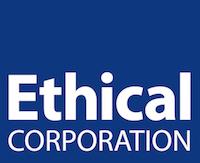

For most companies their greatest risks and impacts lie within their supply chains. To truly address areas such as; GHG emissions, Human Rights violations and water usage companies need to work with a whole host of partners.
In a 1-hour webinar debate, you will hear from businesses on how they are driving large scale change in partnership with suppliers, industry associations, NGOs and competitors.
Join Philips, Dell and the Responsible Sourcing Network and your peers for an exclusive one-hour webinar (December 12th, 10am EST). Be part of the discussion, join us here: http://events.ethicalcorp.com/rbs-ny/webinar/
Learn how to:
- Understand how you can transform your outputs without jeopardising the business
- Identify the right partners to drive change; suppliers, NGOs, academia, start-ups and competitors
- Hear how to convince the leadership to go against decades of business thinking
Can’t join? Sign up anyway to receive the full post-webinar recordings: http://events.ethicalcorp.com/rbs-ny/webinar/
Contact:
Ed Long
Project Director
Ethical Corporation
+44 (0) 20 7375 7188
The Weinstein Company May Get a New CEO, and She's Got Remake Plans
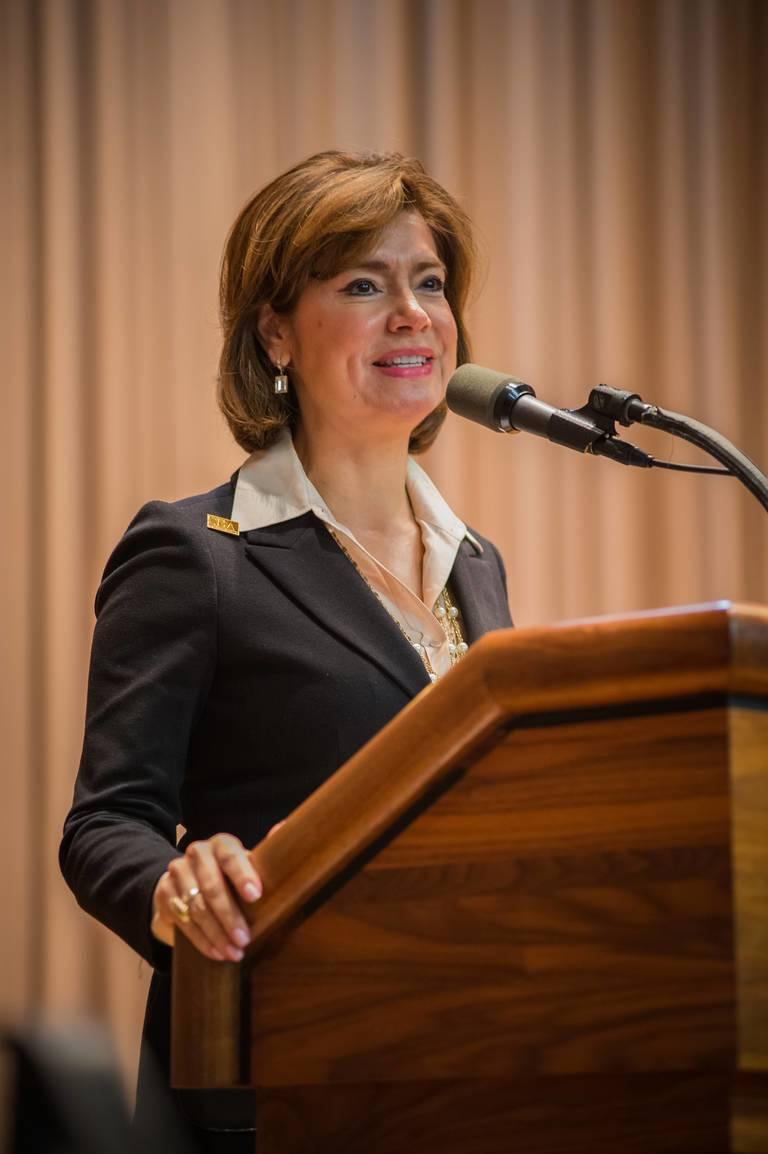

Maria Contreras-Sweet has big plans for her next company, and they aren't by any means the status quo.
You may remember Contreras as the former head of the US Small Business Administration under the Obama administration. But these days, she is better known for her groundbreaking leadership in the private sector. She founded the first bank specifically tailored to provide services to Los Angeles's Latino community and started her own consulting team to expand access to the country's growing Latino consumer base -- what now is a $1.7 trillion market.
And if she succeeds in her next commercial venture, her impact is liable to be just as head-turning. Contreras-Sweet wants to buy the embattled Weinstein Company, and she's already figured out who will run it: women.
Women fill less than a quarter of the seats on film and TV boards. According to a 2016 study by the Media, Diversity and Social Change Initiative at the UC Berkeley Annenberg School for Communications and Journalism, gender and racial diversity is an across-the-board problem in the film and TV entertainment industry. But it is at the corporate level, in boards and c-suites that have the last say to the kinds of entertainment that is funded in the U.S., say the researchers, the challenge is most evident.
Only 19 percent of board of director positions are filled by women. C-suite gender disparity is almost as great: with 21 percent of positions filled by women. Executive management teams, when evident, comprise 19 percent women."[As] power increases," the researchers state, "the participation or representation of women in the executive ranks decreases."
Racial and gender disparity also play out at the director and actor level, where Latino and Asian representation drops dramatically. The ratio of white directors to "underrepresented" directors (those not specifically white) is more than 6 to 1 (87.3 white versus 12.7 percent underrepresented minorities) in the film industry alone, and all underrepresented minorities are far below the U.S. population norm of 37.9 percent, the study reports.
"I believe we have now reached a crossroads where it is imperative that a woman-led board acquire control of the company and create content that continues to inspire audiences from around the world, especially our young girls and boys," Contreras-Sweet told the Weinstein Company in her Nov. 8 letter.
Her offer comes with some sizable benefits for the company, notes Mike Fleming Jr, writer for Deadline Hollywood. The proposal comprising a 51 percent female board comes with 4 solid backers and a cadre of well-known financial advisers, including Loeb & Loeb and Roy Salter from FTI Consulting.
"This could erase what seemed like an indelible stain of scandal and could reignite the company by removing the stigma on assets that include library titles," and other historic series and titles that made the Weinstein Company famous.
In principle, it's also received the blessing of Gloria Allread, the women's rights attorney that has been representing many of the plaintiffs suing Harvey Weinstein for sexual abuse.
"What her endorsement means is that the bid comes with properly set aside contingency funds to make whole the coming wave of plaintiffs," said Fleming.
But it also allows for the Weinstein staff to continue in employment, minimizing the painful need for layoffs and more shareholder angst as the board is systematically replaced.
According to an Oct. 2017 report by Business Insider, the Weinstein Company is currently valued around $150 million, far below the $275 million being offered by Contreras-Sweet. And as Forbes notes, with declining profits in the past, these scandals and looming lawsuits will make it even harder to find a buyer with very deep pockets that is ready to take a risk on the now-waning Weinstein legacy.
"The Weinstein Company will have a tarnished name that will make it an unpopular pick for directors, financiers and stars," notes Forbes staff writer, Natalie Robehmed.
The Weinstein board will likely hear challenges from media companies that have virtually built Hollywood and see an optimum chance for expanding their assets. But few will be able to come as close as Contreras-Sweet to giving the company what it really needs right now in order to protect its investments: a pathway to redemption.
Flickr image: US Department of Agriculture
Making Transparency an Ally in the Battle for Human Rights
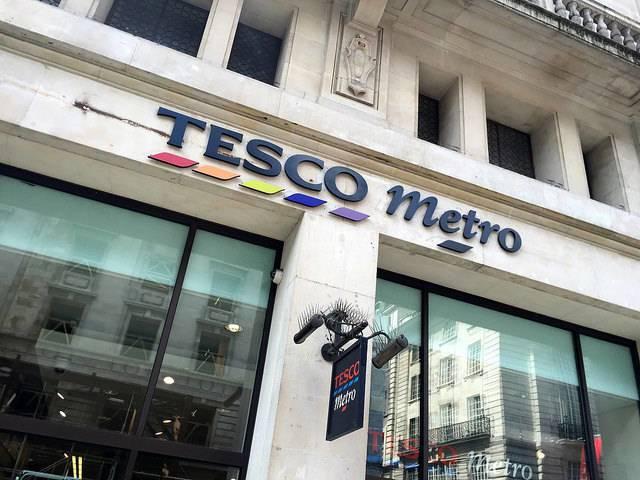

By Laura Quinn for Tea & Water
Tackling human rights in business is no longer just an internal process of supply chain compliance. With transparency reaching an all-time premium, it has become a major market and industry priority. Consumers are bearing their teeth around the globe, taking action online and offline against companies with poor human rights records and questionable sourcing ethics, spurred on by media-savvy activist groups fulfilling their own brand of jihad against unscrupulous companies.
The struggle for business is that getting human rights right, throughout the value chain, is vastly complex and requires the supplier ecosystem and wider industry to come together over many years. Even companies with strong, long-term strategies are open to the risk of exposure, prompting many corporate leadership teams to keep the issue out of public view and bury it within the policies of sustainability and procurement teams. But the difficult reality is that the longer a company keeps its human rights skeletons in the closet, the greater the potential risk of exposure becomes.
It’s only by disrupting the narrative of public exposé and turning transparency into a tool for open engagement and dialogue that companies can begin to safeguard corporate reputations and take a leadership position in the battle for human rights, even if it’s a battle that’s not yet won. And companies that are able to take this lead will also become the strongest voice in the eyes of consumers, driving a conversation that matters not just for the business but on a societal, human and global level.
When Tesco took the bold decision to be the first retailer in the world to publish its food waste data in 2013, it disclosed a shameful level of wasteful practices and rightfully drew criticism from consumers, activists and the media alike. But in putting its head above the parapet it also distinguished its own voice in the issue. Consumers and special interest groups were, for the first time, seeing transparent and honest data instead of hearsay and alleged reports. And activists were no longer banging their head against a closed door; the door was open and they’d been invited in. In being the first to acknowledge its negative role, Tesco executed a well-orchestrated, thought-leadership campaign and went on to become a critical voice in the fight against food waste, driving the credibility of its public Community Food Connection initiative in the process.
Equally, when Paul Lister, from Primark’s ethical trading team, took to the stage for a Q&A at the Trust Women Conference in late 2016, the questions came thick and fast – and few were complimentary. Primark’s pricing strategy and involvement with suppliers inside the Rana Plaza complex that collapsed in Bangladesh had raised questions over its ethical commitments for many years. To face those questions head-on in front of a heavyweight audience of women’s rights and modern slavery experts was brave and, at times, uncomfortable. But by simply standing up and sharing its experience honestly, Primark is already changing the opinion of critics, activists and industry stakeholders and lending credence to its CSR and ethical trade strategy in the eyes of those who would have normally been most critical.
As companies’ sustainable strategies become more sophisticated so must the communication of those strategies to drive positive impact at every level. For human rights that means opening the debate transparently and building a strong voice instead of a closed door. It means educating consumers on the complexities of the problem and being honest about progress, ambitions and targets. And it means inviting the activists into an open dialogue that demonstrates a clear position; making companies the target of collaboration and action instead of protest and exposure.
The battle for better human rights is far from won but those who are able to leverage transparency and open dialogue as tools for positive action will find themselves leading the charge across industry and society, and ensuring their voice is heard positively from the factory floor to the shop floor.
Laura Quinn consults on behalf of Tea & Water, a multi-local agency that combines insight, strategy and communications to help companies motivate real behavior change around their sustainability agendas, throughout the supply chain.